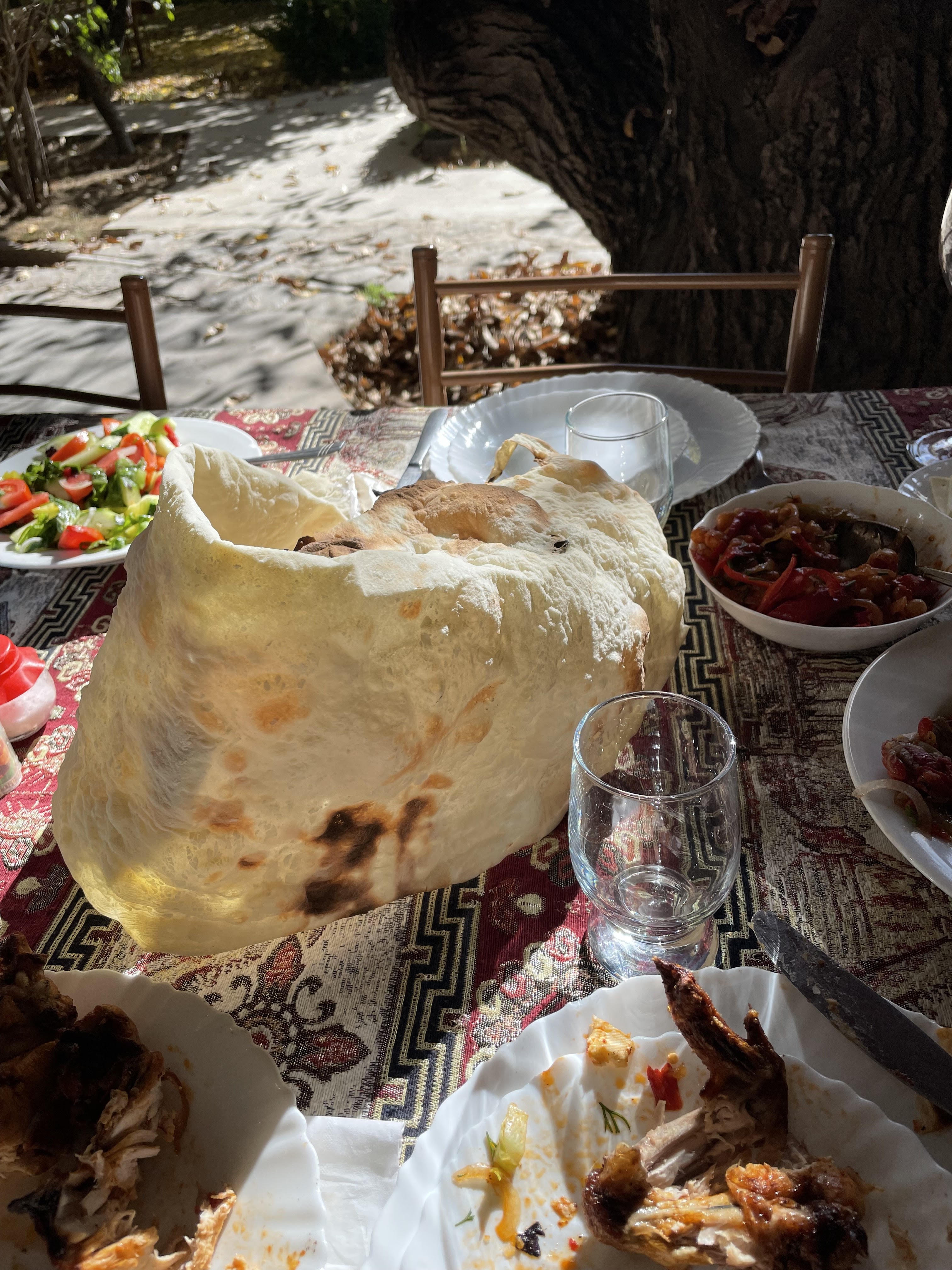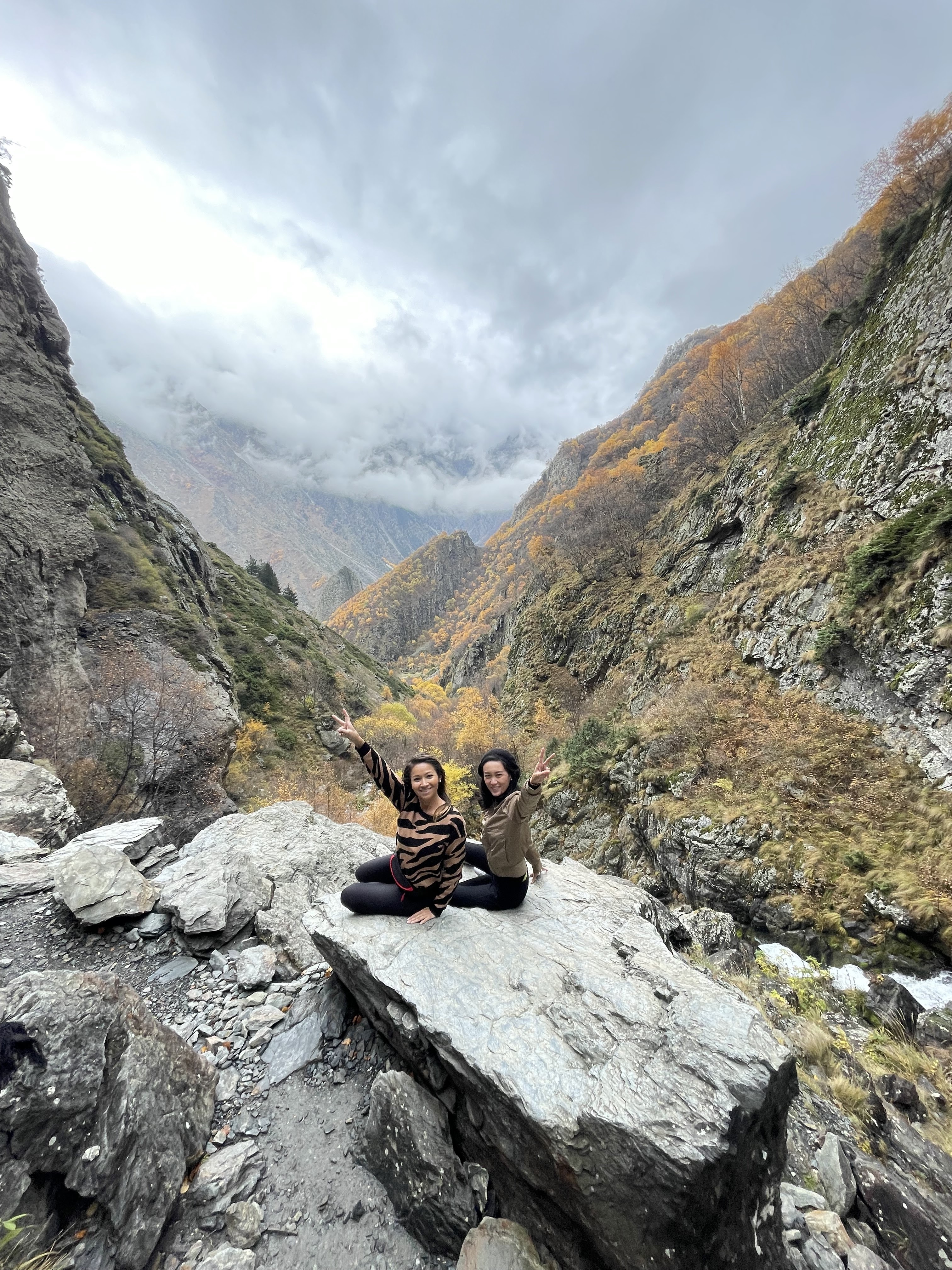5 Things to Know When Traveling to Georgia and Armenia
 |
| A night at Cozy House, Dilijan, Armenia. |
Straddling Europe and Asia, the Caucasus region is filled with medieval churches, ornate art nouveau buildings and Soviet Modernist structures. Georgia is the gateway of the Caucasus, sharing its southern borders with Armenia and Azerbaijan. Its capital, Tbilisi, has welcomed many tourists driven mostly by the country's diverse history, culture, food, and wine region. Evidently, its cobblestoned Old Town reflects a long history under Persian and Russian rule, while the Bridge of Peace over the Kura River connecting to the new district frames the city's omnipresent hot air balloon, a new attraction since 2020.
Georgia share some similarities, including independence from Soviet Union since 1991, with its lesser known neighbors, both of which is also worth a drive or flight. I was able to squeeze in both Georgia and Armenia in a week-long trip, and here are my top 5 things you should know before traveling to these two countries.
1. Georgia is for wine, while Armenia is for brandy.
Although the oldest known winery (as well as the first leather shoe in the world) was found in Armenia's Areni region, I found that most restaurants serve their own homemade semi-sweet, fruit (usually pomegranate) wine, which is akin to juice with alcohol. Nonetheless, the country prides itself as a world leader in brandy production, such as the Yerevan Brandy Company's Ararat brand founded in 1887 during the period of the Russian Empire. A brandy tour in its facility in the capital of Yerevan ends with a meticulous instruction on how to properly sip a 3 and 10 year-old brandy. Unfortunately, I learned the hard way that brandy, which I rarely drink, does trigger my migraine.
Georgia is one of the oldest wine regions in the world. The wine region of Kakheti is a popular tourist destination. I learned from my wine degustation in KTW Wine Factory and Khareba Wine Tunnel the different varietals of Qvevri wine, including white Kisi wine -- the locals fondly refers to this wine as drink wine and kiss me -- and a rare, red wine with cherry notes called Khvanchkara, which doesn't get exported. We also had a memorable stop at a Qvevri master's home to learn how qvevris, which are large earthenware vessels, are made, transported, and buried down in the ground to ferment, store and age traditional Georgian wine.
TIP: Do your own research on wineries that you'd like to visit apart from what the tour guides suggest in order to get the most out your day.
 |
| Using a tool to take the wine out of the qvevri in Khareba Wine Tunnel. |
Alas, time quickly goes by when enjoying good wine. We ran out of time on our last stop, Tsinandali Estate, and was unable to tour the memorial house owned by the late Prince Alexander Chavchavadze, the founder of the Georgian romanticism.
Another unique winery experience is a wine bath that some spa centers offer, including Akhasheni Wine Resort & SPA in Kakheti and the Sam Raan Spa and Wellness Center in Tbilisi. I am uncertain if the health benefits of a wine bath is truly effective, like detoxifying skin and improving oxygen circulation in the body through polyphenols found in wine. Dipping your entire body in a copper bathtub half filled with red wine and water for 30 minutes is an experience to remember comparable to a hammam.
 |
| Wine bath at the Sam Raan Spa and Wellness Center. |
2. The Land of Monasteries.
As the first nation to adopt Christianity in 301 AD, Armenia boasts many medieval churches outside its city center. One that must not be missed is the 13th-century monastery named Novarank, which means "new." Situated on top of a picturesque valley near the town of Yeghegnadzor, the monastery has unique, steep steps to enter its upper sanctuary that I struggled with especially when climbing down.
Georgia also offers myriad of medieval churches. One of the most important religious and cultural landmark is the Gelati Monastery, a UNESCO World Heritage Site, that reflects the golden age of medieval Georgia as one of the first monasteries in the country located in the Imereti region. In Tbilisi, the city boasts the well-maintained Holy Trinity Cathedral, commonly known as Sameba that is the main cathedral of the Georgian Orthodox Church.
TIP: Entering a Georgian monastery is stricter, specifically for women to wear an under the knee skirt and a head scarf or a bonnet.
 |
| The centuries-old Armenian monastery known as Noravank. |
 |
| The Holy Trinity Cathedral of Tbilisi is the main cathedral of the Georgian Orthodox Church. |
3. Savor in Authentic Georgian and Armenian Cuisine.
Both countries share a love for their local breads, soups and vegetables, such as bell peppers and tomatoes. Distinctively, the presence of Barbarestan, a World's 50 Best restaurant in Tbilisi, signals that the city is a foodie haven for gastronomes such as yours truly. Armenia is not too far behind with its traditional and modern cuisine, although note that indoor smoking is still allowed in Yerevan establishments. Therefore, pack your clothes wisely.
 |
| A hearty breakfast with lots of cheese at boutique Communal Hotel, Tbilisi. |
Here a few foodie terms you must know and try in Georgia and Armenia:
Khachapuri, the Georgian cheese bread, comes in many shapes and forms commonly known in the West as an egg boat bread. The khachapuri skewer stuffed with a generous dose of salty, sulguni Georgian cheese looks like a twisted pretzel that is good for dipping in soups, such as the chickirtma chicken soup.
Savor on traditional breads, like the Georgian long pointed bread called shoti puri, which is commonly used as the base of the regular khachapuri with fresh eggs on a bed of cheese, and the Armenian lavash, an unleavened bread baked in an underground clay oven.
 |
| Khachupuri skewers paired with chickirtma chicken soup. |
 |
| Armenian lavash bread with vegetables. |
Soup dumplings called khinkali is the Georgian version of the Chinese xiaolongbao. Made with a thicker dough with minced meat or vegetables and herbs, the khinkali is easier to sip and eat than the more delicate and smaller xiaolongbao.
 |
| Khinkali is usually eaten by itself as the main dish. |
Lobiani is Georgia's version of a stuffed pizza, but this one is stuffed with kidney beans and sometimes topped with jonjoli, fermented sprouts from a flower that only grows in the country.
 |
| Savory puff pastry stuffed with kidney beans called lobiani topped with jonjoli. |
4. Old Town Meets the Cosmopolitan District.
Like many European Cities, Tbilisi's Old Town is connected to the new district with the iconic Peace Bridge. In a day's time, you can enjoy many forms of transportation, including the funicular, river cruise and even a hot air balloon that brings people 150 meters high, to get different views of the city.
Surprisingly in Yerevan, the cosmopolitan city showcases The Cascade, a giant limestone outdoor staircase with a mini indoor museum to boot, connecting downtown and residential areas. This landmark is also surrounded by internationally known sculptures, including from my favorite Colombian artist, Fernando Botero.
 |
| Botero's signature style known as "Boterismo" represents political criticism or humor. |
5. Rich in History.
Discovering new countries means absorbing their history. A few minutes drive from Tbilisi is the Chronicles of Georgia, a stone monument with a view of the Tbilisi sea, depicting biblical scenes on the bottom, and the Kings and Queens of the country atop the arches. This colossal architecture chronicles the history of Georgia.
 |
Soaking in the architecture at Chronicles of Georgia. |
What I really appreciated about the drive through Armenian villages is witnessing the influences of the Soviet era, including the vintage Lada Russian cars that are still running and simple Soviet-era, panel buildings called 'Khrushchyovka'.
 |
| Meep meep coming through with my Russian Lada car. |
BONUS TIP: Fall foliage is at its peak when you visit in mid-October.
 |
| Having fun in the vivid colors of the Fall season. |
 |
| Our hike in Gveleti Waterfalls has a dreamy Fall foliage view. |
Note: In collaboration with Select Georgia. Contact Giorgi Lomidze for a customized itinerary in the Caucasus region. Tell him Christine of Gastronomic Misadventures referred you.












0 comments